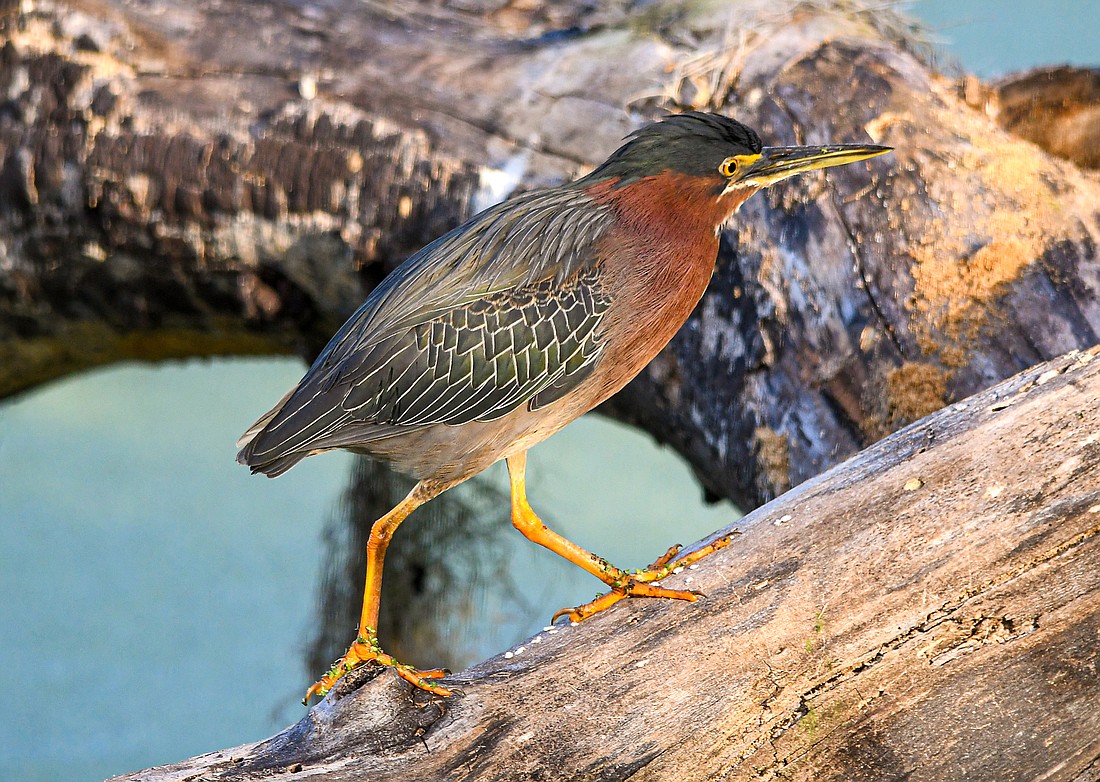- May 22, 2025
-
-
Loading

Loading

Should you spot a green heron who, at 1.5 foot long, with a wingspan of two feet, is one of our smallest heron species, you'd be justified in thinking that it really is not that green. However, closer examination of this common, if elusive, bird, reveals its namesake glossy green back. Unlike their larger cousins, green herons usually hold their necks pulled in tight against their bodies, making them look stocky and compact. And, yes, even tougher to spot.
A green heron's diet is varied, and includes insects, spiders, snails, crustaceans, frogs, and fish. And, like other herons, an agile neck is their most important foraging tool. But, perhaps due to their size (and short legs), instead of wading through the water to forage, green herons utilize a “sit-and-wait” strategy. They'll perch on low-hanging branches or rocks at water’s edge, sitting very still, until prey is spotted. Their neck then snaps into rapid action, with their sharp bill expertly seizing their prey.
Green Herons are one of few birds that use tools to lure prey. They drop both natural and artificial bait (including living creatures, like ants or flies or objects such as seeds, twigs or even bread) into the water. They then go back into “sit-and-wait” mode. When unsuspecting prey comes by to investigate, it is quickly snatched.
Green herons can be found in ponds, swamps, bay-fronts and marshes. Habitat loss and degradation are the primary threats for these clever and beautiful birds.